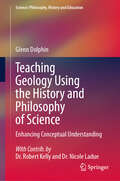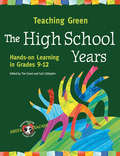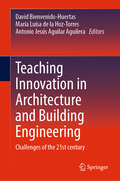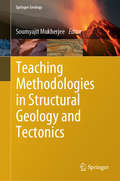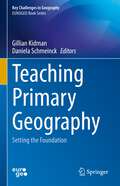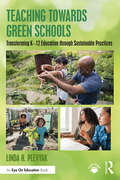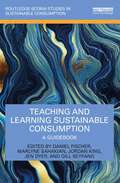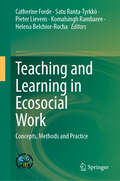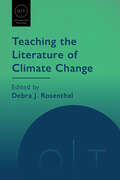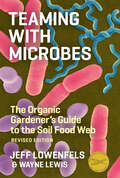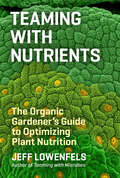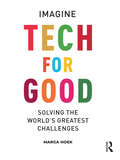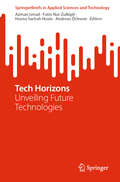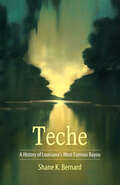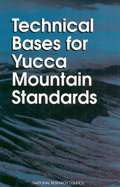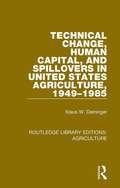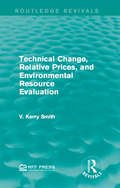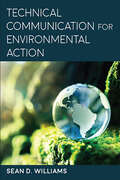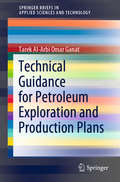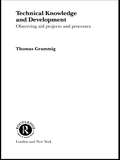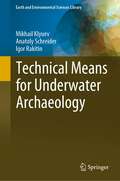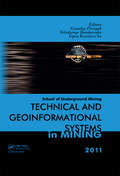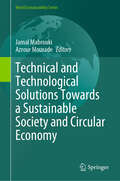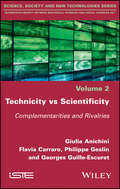- Table View
- List View
Teaching Geology Using the History and Philosophy of Science: Enhancing Conceptual Understanding (Science: Philosophy, History and Education)
by Glenn DolphinThis book provides a case study on how to design and build an introductory geology course for non-science majors. The book presents a foundation with the status of geoscience education and research in geoscience conceptual development as a backdrop for the design process. It then describes the instructional goal-setting process and development of the structural components of the course based on the determined goals. The book presents the three historical narratives (the earth is a historical entity, the earth is very old, and the earth is dynamic) that form the foundation of instruction. It also describes examples of the implicit, explicit, and reflective treatments of the nature of science to help student develop a better sense of the process of geology. Finally, the book gives preliminary results from some innovative approaches to research on student learning within the domains of geological content knowledge and NOS content knowledge within the course.
Teaching Green - The High School Years
by Tim Grant Gail LittlejohnThis resource is ideal for anyone working with young people in grades 9-12, whether in schools or in non-formal educational settings. Richly illustrated, it offers fifty teaching strategies that promote learning about natural systems and foster critical thinking about environmental issues, both local and global. It contains new approaches to learning, strategies for living sustainably, and numerous activities that promote interdisciplinary learning. In addition, the book provides suggestions for how best to green individual subject areas, develop integrated learning programs, or replicate exemplary programs created by innovative schools and communities.Containing contributions from over sixty educators from across North America, the book's strength lies in its diverse content. Readers learn how best to apply systems thinking, teach about controversial issues, and use a step-by-step approach to creative problem-solving in environmental projects. Also provided are instructions for measuring the ecological footprint of a high school, creating an indoor "living system" that cleans water, monitoring air quality with lichens, and using green technologies to help green school campuses. Many articles and activities engage teenagers in outdoor learning and community restoration projects. Suggestions are included for connecting students with special needs to the environment around them.Readers will find accessible background information and suggestions for many practical projects and activities. It is sure to appeal to a wide range of teachers, educators, and parents seeking innovative ideas for incorporating green themes into their programs.Tim Grant and Gail Littlejohn are the editors of Green Teacher magazine, North America's award-winning environmental teaching resource.
Teaching Innovation in Architecture and Building Engineering: Challenges of the 21st century
by David Bienvenido-Huertas María Luisa de la Hoz-Torres Antonio Jesús Aguilar AguileraThis book presents contributions on teaching innovation in university architecture and building engineering studies. The authors explain how the construction sector demands that future architects and building engineers have the knowledge and skills that allow them to meet the decarbonization objectives established by international organizations and that this causes the level of knowledge to be higher. The contributors further discuss new technologies and the internationalization of studies presenting new challenges university studies must face. This heterogeneity is represented in the chapters that make up this book developed by researchers from different countries. The book is divided into three blocks: (i) Active learning methodologies; (ii) Innovative methodologies applied to learning process; and (iii) Traditional vs. Advanced Techniques. The chapters of the book represent an advance in the current knowledge of teaching innovation techniques in university architecture and building engineering studies.
Teaching Kids To Love The Earth
by Marina LacheckiTeaching Kids to Love the Earth is a collection of 186 earth-caring activities designed for use with children of all ages to help them experience and appreciate the earth. This book leads you through the authors&’ Sense of Wonder Circle: curiosity, exploration, discovery, sharing, and passion. Each chapter contains a story, instructions for a main activity, suggestions for related activities, and a lsit of additional resources. Teaching Kids to Love the Earth will enable you and the children you work with to experience a &“sense of wonder&” about the world we share.
Teaching Methodologies in Structural Geology and Tectonics (Springer Geology)
by Soumyajit MukherjeeThis edited book discusses various challenges in teaching structural geology and tectonics and how they have been overcome by eminent instructors, who employed effective and innovative means to do so. All of the chapters were written by prominent and active academics and geoscientists fully engaged in teaching Structural Geology and Tectonics. New instructors will find this book indispensible in framing their teaching strategy. Effective teaching of Structural Geology and Tectonics constitutes the backbone of geoscience education. Teaching takes place not only in classrooms, but also in labs and in the field. The content and teaching methodologies for these two fields have changed over time, shaped by the responsibilities that present-day geoscientists are expected to fulfill.
Teaching Primary Geography: Setting the Foundation (Key Challenges in Geography)
by Gillian Kidman Daniela SchmeinckThis book provides an international perspective on teaching and learning geography in the primary classroom. It describes the essence of primary school geography and identifies the ‘big ideas’, thereby offering a synthesis of the international geography curricula and classroom profiles against these big ideas. Each chapter discusses current and new research on a set topic, yet a common thread running between chapters is the assessment relevant to that particular topic. By providing a portrait of the central concepts, the essential skills and necessary inquiry processes of a primary geography education, the book will be of interest to education researchers, classroom teachers and the pre-service teacher, curriculum writers and policy writers.
Teaching Towards Green Schools: Transforming K–12 Education through Sustainable Practices
by Linda H. PlevyakThis engaging and timely book showcases practical ways that PreK–12 teachers and school leaders can create and implement sustainability-focused projects and practices in their classrooms and schools, helping promote a healthy, sustainable environment and curriculum for students and leading the way towards becoming a green school. Sharing real-world case studies and detailed walk-throughs of sustainable schools in action – from Madison, Alabama, to Bali, Indonesia – author Linda H. Plevyak lays out the benefits, principles and practices of creating a sustainable school from beginner classroom projects like creating a garden, recycling and composting to more complex and school-wide initiatives like energy audits, creating an environmental management system, engaging with policy and building and leveraging community partnerships. Plevyak highlights sustainable practices that can be developed with little to no budget and focuses on those that support the development of critical thinking skills, promote project-based learning and consider the environment as a learning tool, incorporating sustainability as a natural progression of the learning process. The book outlines extensive resources teachers and schools can use to embed sustainability in their programs and curriculum, offering teachers, school leaders and policy makers the tools they need to provide this generation of students with the knowledge and skills to create a more sustainable world.
Teaching and Learning Sustainable Consumption: A Guidebook (Routledge-SCORAI Studies in Sustainable Consumption)
by Daniel Fischer Marlyne Sahakian Gill Seyfang Jordan King Jen DyerThis book is a comprehensive guide on how to teach sustainable consumption in higher education. Teaching and Learning Sustainable Consumption: A Guidebook systematizes the themes, objectives, and theories that characterize sustainable consumption as an educational field. The first part of the book discusses approaches to teaching and learning sustainable consumption in higher education, including reflections on how learning occurs, to more practical considerations like how to set objectives or assess learning outcomes. The second part of the book is a dive into inspiring examples of what this looks like in a range of contexts and towards different aims – involving 57 diverse contributions by teachers and practitioners. Building on the momentum of a steady increase in courses addressing sustainable consumption over the past decade, this guidebook supports innovative approaches to teaching and learning, while also bringing to the fore conceptual debates around higher education and sustainability. Overall, this book will be a seminal resource for educators teaching about sustainability and consumption. It will help them to navigate the specifics of sustainable consumption as a field of scholarship, and design their teaching approaches in a more informed, competent, and creative way.
Teaching and Learning in Ecosocial Work: Concepts, Methods and Practice
by Catherine Forde Satu Ranta-Tyrkkö Pieter Lievens Komalsingh Rambaree Helena Belchior-RochaThis book aims to champion teaching and learning of ecosocial work in educational institutions which offer social work and related programmes. It is the first book to focus specifically on teaching and learning in ecosocial work and one of the first to incorporate student perspectives on and initiatives in ecosocial work teaching, learning and practice. Ecosocial work is an evolving framework to learn about and practice social work from the premise that humans are part of the web of life on Earth. While this understanding should guide human activities, current planetary-scale anthropogenic socio-environmental problems such as the climate crisis, ocean acidification, biodiversity and species loss, prove the opposite. Social work and allied professions stem from the same anthropocentric world view and need to reconfigure their relationship to other-than-humans and the planetary limits of existence. This requires in-depth renewal of social work and related professions and an ecosocial/ecological paradigm change in which education is pivotal. Written by academics, students and practitioners working in different parts of the world and offering interdisciplinary perspectives, the book provides: Chapters and case studies on concepts, methods, and experiences of teaching and learning in ecosocial work. Discussion of the current terrain of ecosocial work in principle and practice. Ideas on the kinds of new thinking ecosocial work requires and on how these can be taught and practiced, promoting economic, social and environmental sustainability. This book makes an original and internationally acclaimed contribution to ecosocial work education. As the conduit for preparing social workers to become active agents of ecosocial change, critical attention is given to the importance of education as foundational to this professional endeavour. This book provides essential reading for all social work professionals, scholars, educators, and learning institutions. Heather Boetto, Associate Professor, Charles Stuart University, Australia. A comprehensive book about the challenges and opportunities of teaching the ecosocial framework in social work. Various perspectives open up new possibilities for understanding the practices of teaching ecosocial work in different contexts. A strong reading recommendation for anyone interested in understanding and teaching the relationship between social work and environmental issues. Kati Närhi, Professor, University of Jyväskylä, Finland.
Teaching the Literature of Climate Change (Options for Teaching)
by Debra J. RosenthalOver the past several decades, writers such as Margaret Atwood, Paolo Bacigalupi, Octavia E. Butler, and Kathy Jetn̄il-Kijiner have explored climate change through literature, reflecting current anxieties about humans' impact on the planet. Emphasizing the importance of interdisciplinarity, this volume embraces literature as a means to cultivate students' understanding of the ongoing climate crisis, ethics in times of disaster, and the intrinsic intersectionality of environmental issues.Contributors discuss speculative climate futures, the Anthropocene, postcolonialism, climate anxiety, and the usefulness of storytelling in engaging with catastrophe. The essays offer approaches to teaching interdisciplinary and cross-listed courses, including strategies for team-teaching across disciplines and for building connections between humanities majors and STEM majors. The volume concludes with essays that explore ways to address grief and to contemplate a hopeful future in the face of apocalyptic predictions.
Teaming with Microbes: The Organic Gardener's Guide to the Soil Food Web, Revised Edition (Science for Gardeners)
by Wayne Lewis Jeff LowenfelsHealthy soil teems with life—not just earthworms and insects, but a staggering multitude of bacteria, fungi, and other microorganisms. Chemical fertilizers injure the microbial life that sustains healthy plants, and the soil becomes increasingly dependent on artificial, often toxic, substances. But there is an alternative: by strengthening the soil food web—the complex world of soil-dwelling organisms—gardeners can create a nurturing environment for plants. Teaming with Microbes extols the benefits of cultivating the soil food web. It clearly explains the activities and organisms that make up the web, and explains how gardeners can cultivate the life of the soil through the use of compost, mulches, and compost tea. With Jeff Lowenfels’ help, everyone—from devotees of organic gardening techniques to weekend gardeners who simply want to grow healthy, vigorous plants—can create rich, nurturing, living soil.
Teaming with Nutrients: The Organic Gardener's Guide to Optimizing Plant Nutrition (Science For Gardeners Ser.)
by Jeff LowenfelsA 2014 Garden Writers Association Media Award Winner Just as he demystified the soil food web in his ground-breaking book Teaming with Microbes, in this new work Jeff Lowenfels explains the basics of plant nutrition from an organic gardener’s perspective. Most gardeners realize that plants need to be fed but know little or nothing about the nature of the nutrients and the mechanisms involved. In his trademark down-to-earth, style, Lowenfels explains the role of both macronutrients and micronutrients and shows gardeners how to provide these essentials through organic, easy-to-follow techniques. Along the way, Lowenfels gives the reader easy-to-grasp lessons in the biology, chemistry, and botany needed to understand how nutrients get into the plant and what they do once they’re inside.
Tech For Good: Imagine Solving the World’s Greatest Challenges
by Marga HoekTech For Good reveals how Fourth Industrial Revolution technologies will help solve the world’s greatest challenges like climate change, biodiversity loss, inequality, and poverty. Tech For Good presents a unique perspective on how business can successfully apply advanced technologies in a purpose-driven manner while unlocking new markets and seizing business opportunities. Packed with 75 real-life business cases of companies from all over the world, this inspiring book unfolds a compelling narrative about how businesses commercially synergize technology and sustainability. The purpose of this book is to imagine the unprecedented possibilities advanced technologies offer business to drive sustainable growth. Tech for Good will be vital for realizing our Global Goals.
Tech Horizons: Unveiling Future Technologies (SpringerBriefs in Applied Sciences and Technology)
by Andreas Öchsner Azman Ismail Fatin Nur Zulkipli Husna Sarirah HusinThis book assembles a varied array of chapters, each delving into a distinct aspect of innovation and its practical applications. Readers will explore cutting-edge technologies and applicable techniques that aimed at enhancing academic performance. "Tech Horizon" provides an enthralling exploration of the diverse and transformative vistas within the domain of modern technology.
Teche: A History of Louisiana's Most Famous Bayou (America's Third Coast Series)
by Shane K. BernardRecipient of a 2017 Book of the Year Award presented by the Louisiana Endowment for the HumanitiesShane K. Bernard's Teche examines this legendary waterway of the American Deep South. Bernard delves into the bayou's geologic formation as a vestige of the Mississippi and Red Rivers, its prehistoric Native American occupation, and its colonial settlement by French, Spanish, and, eventually, Anglo-American pioneers. He surveys the coming of indigo, cotton, and sugar; steam-powered sugar mills and riverboats; and the brutal institution of slavery. He also examines the impact of the Civil War on the Teche, depicting the running battles up and down the bayou and the sporadic gunboat duels, when ironclads clashed in the narrow confines of the dark, sluggish river.Describing the misery of the postbellum era, Bernard reveals how epic floods, yellow fever, racial violence, and widespread poverty disrupted the lives of those who resided under the sprawling, moss-draped live oaks lining the Teche's banks. Further, he chronicles the slow decline of the bayou, as the coming of the railroad, automobiles, and highways reduced its value as a means of travel. Finally, he considers modern efforts to redesign the Teche using dams, locks, levees, and other water-control measures. He examines the recent push to clean and revitalize the bayou after years of desecration by litter, pollutants, and invasive species. Illustrated with historic images and numerous maps, this book will be required reading for anyone seeking the colorful history of Louisiana and the Gulf Coast.As a bonus, the second part of the book describes Bernard's own canoe journey down the Teche's 125-mile course. This modern personal account from the field reveals the current state of the bayou and the remarkable people who still live along its banks.
Technical Bases for Yucca Mountain Standards
by Committee on Technical Bases for Yucca Mountain StandardsThe United States currently has no place to dispose of the high-level radioactive waste resulting from the production of the nuclear weapons and the operation of nuclear electronic power plants. The only option under formal consideration at this time is to place the waste in an underground geologic repository at Yucca Mountain in Nevada. However, there is strong public debate about whether such a repository could protect humans from the radioactive waste that will be dangerous for many thousands of years. This book shows the extent to which our scientific knowledge can guide the federal government in developing a standard to protect the health of the public from wastes in such a repository at Yucca Mountain. The U.S. Environmental Protection Agency is required to use the recommendations presented in this book as it develops its standard.
Technical Change, Human Capital, and Spillovers in United States Agriculture, 1949-1985 (Routledge Library Editions: Agriculture #17)
by Klaus W. DeiningerFirst published in 1995. Based on a detailed adjustment for the quality of inputs and outputs, this study develops state-level measures for total factor productivity growth in US agriculture which are used to determine (i) the presence and determinants of convergence across states; (ii) the contribution of individual factors of production to productivity growth; (iii) the importance of spillovers across states; (iv) the economic effects of, returns to, and factor biases of research and extension. This title will be of great interest to students of economics and agriculture.
Technical Change, Relative Prices, and Environmental Resource Evaluation (Routledge Revivals)
by V. Kerry SmithOriginally published in 1974, Technical Change, Relative Prices, and Environmental Resource Evaluation explores the relationship between natural environmental resources and the differential implications of technological change and relative price appreciation. Smith claims that price is linked to technological progress and comments on the economic issues surrounding this. This title will be of interest to students of Environmental Studies and Economics.
Technical Communication for Environmental Action (SUNY series, Studies in Technical Communication)
by Sean D. WilliamsClimate change is one of the most significant challenges facing the global community in the twenty-first century. With its position at the border of people, technology, science, and communication, technical communication has a significant role to play in helping to solve these complex environmental problems. This collection of essays engages scholars and practitioners in a conversation about how the field has contributed to pragmatic and democratic action to address climate change. Compared to most prior work—which offers theoretical perspectives of environmental communication—this collection explores the actual practice of international technical communicators who participate in government projects, corporate processes, nonprofit programs, and international agency work, demonstrating how technical communication theories such as participatory design, social justice, and ethics can help shape pragmatic environmental action.br>SUNY Press has collaborated with Knowledge Unlatched to unlock KU Focus Collection titles. The Knowledge Unlatched titles have been made open access through libraries coming together to crowd fund the publication cost. Each monograph has been released as open access making the eBook freely available to readers worldwide. Discover more about the Knowledge Unlatched program here: https://www.knowledgeunlatched.org/. It can also be found in the SUNY Open Access Repository at <a href="https://soar.suny.edu/handle/20.500.12648/8482 ">https://soar.suny.edu/handle/20.500.12648/8482 .
Technical Guidance for Petroleum Exploration and Production Plans (SpringerBriefs in Applied Sciences and Technology)
by Tarek Al-Arbi GanatThis book presents detailed explanations of how to formulate field development plans for oil and gas discovery. The data and case studies provided here, obtained from the authors’ field experience in the oil and gas industry around the globe, offer a real-world context for the theories and procedures discussed. The book covers all aspects of field development plan processes, from reserve estimations to economic analyses. It shows readers in both the oil and gas industry and in academia how to prepare field development plans in a straightforward way, and with substantially less uncertainty.
Technical Knowledge and Development: Observing Aid Projects and Processes (Routledge Studies in Development and Society #Vol. 11)
by Thomas GrammigDevelopment and aid projects often fail to improve technological capacity. Their reform has been a widely acknowledged challenge for three decades. This book demonstrates theoretically and empirically how aid practitioners shape the organizational, social and inter-cultural dynamics of development projects in industry.
Technical Means for Underwater Archaeology (Earth and Environmental Sciences Library)
by Mikhail Klyuev Anatoly Schreider Igor RakitinThe book discusses various aspects of the technical support of underwater archaeological research in marine and freshwater areas. This book considers the relevance, specificity, and artifacts of underwater archaeological research, stating the factors of flooding of archaeological artifacts. The authors describe the basic equipment for underwater work, as well as the equipment for remote study of the bottom and underwater archaeological research. This book presents the usage of instrumentation in underwater archaeology. Case studies included in this book correspond to the flooded ancient Greek cities of Fanagoria and Patraeus in the Taman Bay of the Black Sea, flooded Neolithic settlements on Lake Sennitsa in the Pskov region of Russia, sunken ships in the north of the Black Sea and sunken liner “Titanic” in the Atlantic Ocean. The book is intended for students, graduate students and archaeologists who are interested in the specifics of underwater archaeological research and are planning to conduct it.
Technical and Geoinformational Systems in Mining: School of Underground Mining 2011
by Genadiy Pivnyak Volodymyr Bondarenko Iryna Kovalevs’kaNew trends of mineral deposits mining in the world consist of intensifying and concentration of mining operations. This is achieved with the help of new technical equipment that is more reliable, having greater service life and more available power. Consideration is given to quantity reduction of stopes and development workings together with t
Technical and Technological Solutions Towards a Sustainable Society and Circular Economy (World Sustainability Series)
by Jamal Mabrouki Azrour MouradeResource depletion and ecological risks are more than ever at the heart of societal and economic debates. In the 1970s, the developed countries saw the Fordist growth regime crumble in parallel with the growing awareness of the ecological issue. Since the first industrial revolutions, technological dynamics have been the cause of many environmental problems, and there is a consensus on the diagnosis. Integrated technologies reduce resource use and/or pollution at source by using cleaner production methods. This generally leads to a reduction in the by-products, energy inputs and resources used by companies to produce goods.Integrated production technologies reduce negative environmental impacts at source by substituting or modifying cleaner technologies. Examples of integrated, or cleaner, production technologies are the recirculation of materials, the use of environmentally friendly materials (such as the substitution of water for organic solvents), etc. However, the implementation of integrated production technologies is often hampered by obstacles related to cost, coordination and skill inertia problems and to the productive organisation of companies. In addition to the high investment costs of new integrated technologies, additional barriers may emerge depending on the nature of the environmental problem and the type of environmental regulation in question.
Technicity vs Scientificity: Complementarities and Rivalries
by Georges Guille-Escuret Flavia Carraro Giulia Anichini Philippe GeslinThe relationship between technicity and scientificity is often overlooked or avoided despite being a determining factor for establishing interdisciplinarity. By focusing on this relationship and highlighting a number of its ramifications, this book sheds light on the hidden or skewed stakes that condition a wide array of scientific projects. The authors present different approaches based on their own professional experience, focusing on the technique–science relationship in domains as diverse as brain mapping, the decipherment of Mycenaean writing and the design process. Each chapter presents varying and often opposing epistemological conclusions to provide the reader with a wide breadth of examples in different fields. Although the scope of this book is far from exhaustive, it serves as a starting point for the necessary and long-overdue clarification of the relationship between these neighboring, yet disjointed, sectors.
